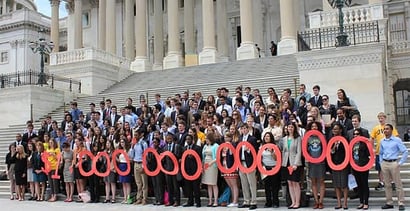

Student loans have overtaken both credit card and automobile debt as the largest percentage of household debt in the U.S.
According to new data from the Federal Reserve, student loan debt has tripled since 2004 to nearly $1 trillion.
The reasons the Federal Reserve gives for this rapid increase include: rising numbers of parents taking out student loans due to the recession, a still-weak job market and students staying in school longer or opting for advanced degrees.
Whatever the reasons, the increased student loan debt has the potential to damage the U.S. economy on a scale similar to the housing collapse.
Student loan delinquency rates are rising, with as many as 30 percent that are now more than 90 days overdue. Compare that to the 10 percent student loan delinquency rates in 2004.
What is even more alarming is the rate is increasing.
“Student loan debt has tripled
since 2004 to nearly $1 trillion.”
According to the U.S. Department of Education, loans that originated in the period from 2005 to 2007 have a default rate of 12.4 percent.
However, loans that originated from 2010 to 2012 have a default rate of more than 15 percent.
Part of the reason for this can be attributed to the very tight labor market, preventing recent graduates from gaining employment in their chosen field.
Sallie Mae, the largest issuer of student loans, has recognized there is a growing problem and has begun selling student loans to large institutions at an increasing rate.
These large buyers of debt are hoping to reap yields that are greater than they can get through treasuries. These are a far riskier type of security.
As the job market improves, people hope the default rate on student loans will level off or even decrease.
In the meantime, we can all just cross our fingers and hope we do not see a repeat of the economic crunch in 2008.
Photo: www.shfwire.com
Advertiser Disclosure
BadCredit.org is a free online resource that offers valuable content and comparison services to users. To keep this resource 100% free for users, we receive advertising compensation from the financial products listed on this page. Along with key review factors, this compensation may impact how and where products appear on the page (including, for example, the order in which they appear). BadCredit.org does not include listings for all financial products.
Our Editorial Review Policy
Our site is committed to publishing independent, accurate content guided by strict editorial guidelines. Before articles and reviews are published on our site, they undergo a thorough review process performed by a team of independent editors and subject-matter experts to ensure the content’s accuracy, timeliness, and impartiality. Our editorial team is separate and independent of our site’s advertisers, and the opinions they express on our site are their own. To read more about our team members and their editorial backgrounds, please visit our site’s About page.




